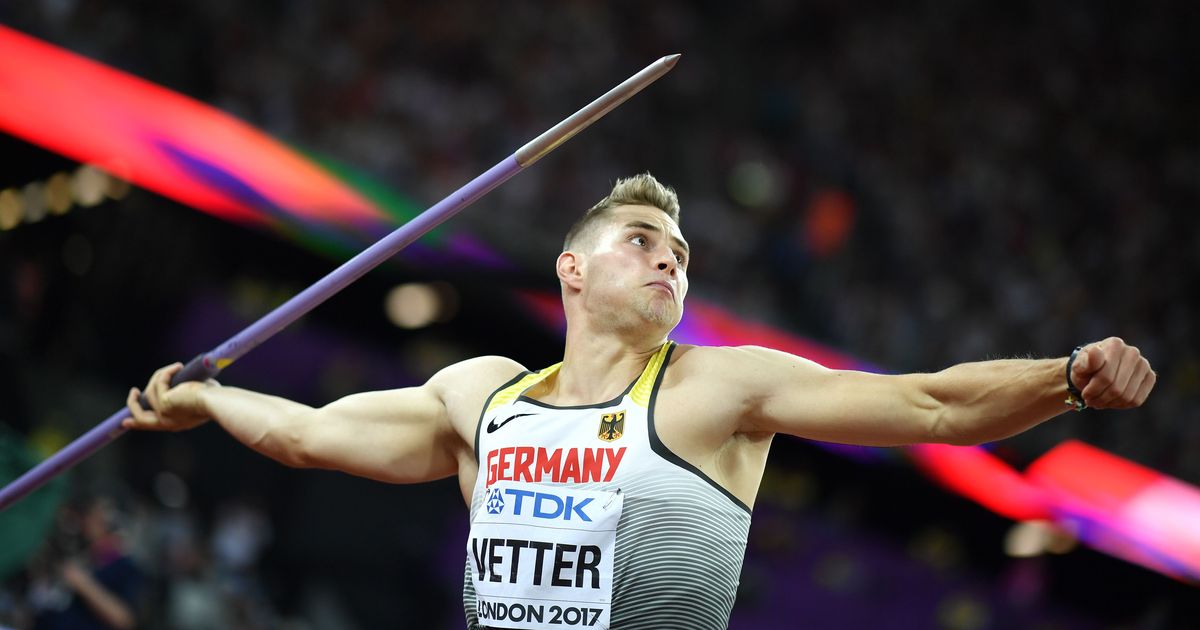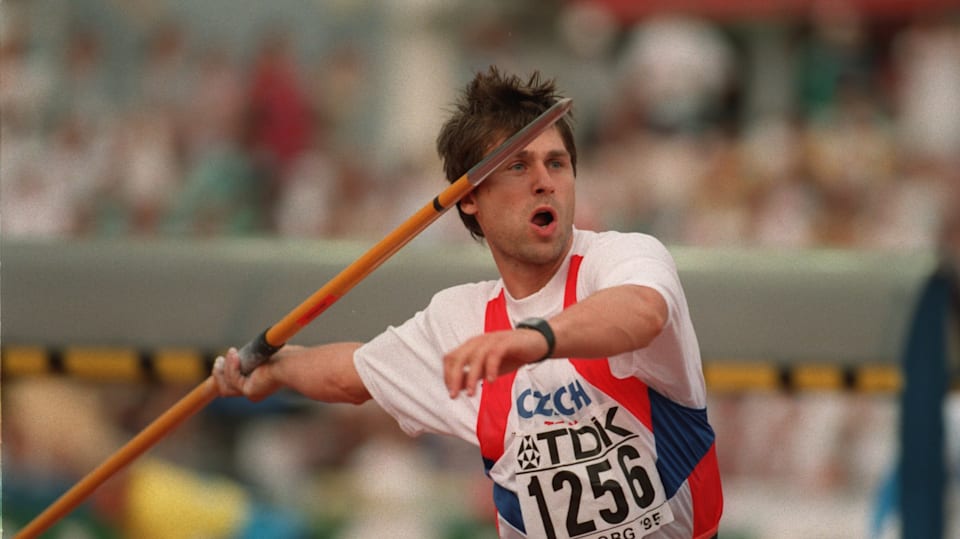History of the World Record Javelin Throw
The javelin throw, a track and field event, has seen remarkable evolution in its world record over the years. From the early days of rudimentary techniques and equipment to the modern era of sophisticated technology and biomechanics, the record has been pushed further and further. This journey is marked by the achievements of legendary athletes who have redefined the limits of human performance.
Evolution of the World Record
The world record in javelin throw has been broken numerous times, reflecting the continuous improvement in technique, equipment, and athletic prowess. The evolution of the record can be traced back to the early 20th century, with significant milestones achieved in the latter half of the century and into the 21st century.
- Early Years (1900s-1950s): The initial world records were set in the early 1900s, with the javelin throw being dominated by athletes from Finland and Sweden. During this period, the javelin was relatively heavy and short, and the throwing technique was less refined. The record remained below 70 meters for several decades.
- Breakthrough in the 1950s: The 1950s witnessed a significant breakthrough in javelin throw technique, with the introduction of the “whip” technique. This technique, pioneered by athletes like Finland’s Yrjö Nikkanen, emphasized a more fluid and powerful throwing motion, leading to a dramatic increase in throwing distance. This period also saw the introduction of lighter and longer javelins, which allowed athletes to throw further.
- Modern Era (1960s-Present): The modern era of javelin throw is characterized by further refinements in technique, equipment, and training methods. The introduction of the “V-grip” technique, which allowed for a more controlled release of the javelin, led to even greater distances. The development of specialized javelin training facilities and the use of biomechanical analysis tools have also contributed to the improvement of performance. Athletes like Jan Železný from the Czech Republic, who holds the current world record, have pushed the boundaries of human performance.
Comparison of Techniques and Equipment
The javelin throw technique and equipment used in the past differed significantly from those used today.
- Techniques: Early techniques relied on a more upright throwing motion, often resulting in a shorter throw. The introduction of the “whip” technique in the 1950s revolutionized the sport, emphasizing a more fluid and powerful motion. The “V-grip” technique, which emerged in the 1980s, further enhanced control and accuracy.
- Equipment: Javelins used in the early days were heavier and shorter, with a thicker shaft. These javelins were less aerodynamic and did not allow for the same throwing distances as modern javelins. The development of lighter, longer, and more aerodynamic javelins in the latter half of the 20th century significantly impacted throwing distances.
Impact of Technological Advancements
Technological advancements have played a crucial role in the evolution of the javelin throw world record.
- Biomechanical Analysis: The use of biomechanical analysis tools, such as motion capture systems and force plates, has allowed athletes to better understand their throwing motion and identify areas for improvement. This has led to more efficient and powerful throwing techniques.
- Training Facilities: Specialized javelin training facilities, equipped with specialized equipment and surfaces, have provided athletes with a controlled environment to train and improve their technique. These facilities have also allowed for the development of more effective training programs.
- Equipment Design: Advancements in material science and engineering have led to the development of lighter, stronger, and more aerodynamic javelins. These javelins allow athletes to throw further and with greater accuracy.
“The javelin throw is a complex and demanding sport that requires a combination of strength, speed, technique, and mental focus. The evolution of the world record reflects the continuous improvement in all of these areas.”
The Current World Record Holder and Their Achievement

The current world record holder in the men’s javelin throw is Jan Železný from the Czech Republic. He achieved this remarkable feat on May 25, 1996, at the IAAF Grand Prix in Jena, Germany, with a throw of 98.48 meters (323 feet 1 inch).
This record has stood for over 27 years, showcasing Železný’s exceptional talent and the lasting impact of his performance. His journey to achieving this record is a testament to dedication, hard work, and a relentless pursuit of excellence.
Jan Železný’s Journey to the World Record
Železný’s journey to the world record began at a young age. He started throwing javelin in his early teens, quickly displaying a natural talent for the sport. His dedication and hard work allowed him to rise through the ranks, culminating in his first major international success at the 1992 Barcelona Olympics where he won gold. This victory marked the beginning of his reign as one of the world’s best javelin throwers.
Železný’s Training Regimen and Physical Attributes
Železný’s training regimen was meticulously designed to maximize his potential. He focused on building strength, power, and flexibility, all essential for achieving optimal javelin throw performance. His training included a combination of weightlifting, plyometrics, and specialized javelin drills. He also paid close attention to his nutrition and recovery, ensuring his body was always prepared for the demands of training.
Železný’s physical attributes played a crucial role in his success. He possessed a combination of height, weight, and muscle mass that gave him a significant advantage in the javelin throw. His long arms and powerful legs allowed him to generate tremendous force during the throw.
Factors Contributing to the Record-Breaking Throw, World record javelin throw
Several factors contributed to Železný’s record-breaking throw. The weather conditions on that day were ideal, with a slight tailwind that helped propel the javelin further. Železný’s mental state was also a critical factor. He was in peak physical and mental condition, and he approached the throw with confidence and focus. He executed his technique flawlessly, maximizing his power and accuracy.
“It was a perfect throw, everything was perfect,” said Železný after his record-breaking throw.
Železný’s achievement continues to inspire generations of javelin throwers, and his record stands as a testament to his exceptional talent and dedication to the sport.
The Science and Technique Behind a Record-Breaking Throw: World Record Javelin Throw
/janzelezny-michaelsteele-56a827f83df78cf7729ca7aa.jpg)
A record-breaking javelin throw is a testament to the intricate interplay of biomechanics, technique, and athletic prowess. It involves a series of coordinated movements that maximize the javelin’s velocity and release angle, ultimately determining the distance it travels.
The Biomechanics of a Successful Throw
The biomechanics of a javelin throw involves a chain reaction of movements, starting from the initial run-up and culminating in the release of the javelin. The thrower’s body acts as a lever system, transferring energy from the lower body to the upper body, ultimately propelling the javelin forward.
- Run-up: The run-up is a crucial phase, building momentum and transferring energy from the legs to the upper body. The thrower aims to maintain a consistent speed and rhythm throughout the run-up, ensuring a smooth transition to the throwing phase.
- Plant: The plant marks the transition from the run-up to the throwing phase. The thrower plants their foot firmly on the ground, creating a pivot point for the throwing motion. This action generates a powerful force that rotates the body and transfers energy to the upper body.
- Backswing: The backswing involves drawing the javelin back, creating tension in the muscles and storing potential energy. The thrower’s body is positioned in a slightly bent-over stance, with the javelin held behind them, ready for release.
- Forward Swing: The forward swing is the most dynamic phase of the throw, involving a rapid rotation of the body and a powerful extension of the arm. The thrower’s core muscles play a critical role in transferring energy from the lower body to the upper body, maximizing the javelin’s velocity.
- Release: The release is the culmination of all the preceding movements. The thrower releases the javelin with a flick of the wrist, aiming for a specific release angle and spin. The javelin is released at a slight upward angle, allowing it to travel a greater distance.
Factors Influencing Throw Distance
Several factors contribute to the distance of a javelin throw, each influencing the trajectory and velocity of the projectile.
- Release Angle: The release angle is a crucial factor determining the javelin’s trajectory. The optimal release angle for maximum distance is approximately 45 degrees. This angle allows the javelin to achieve a balanced combination of horizontal and vertical velocity.
- Release Speed: The release speed directly affects the javelin’s initial velocity, which in turn influences the distance it travels. Higher release speeds result in greater distances.
- Spin: The spin imparted to the javelin during release contributes to its stability and flight path. A slight spin helps the javelin maintain a consistent trajectory, reducing the effects of air resistance.
Phases of a Javelin Throw
The javelin throw can be broken down into distinct phases, each with specific technical aspects contributing to a successful throw.
| Phase | Description | Technical Aspects |
|---|---|---|
| Run-up | The initial phase where the thrower gains momentum and prepares for the throwing motion. | Consistent speed, rhythm, and a smooth transition to the throwing phase. |
| Plant | The transition point from the run-up to the throwing phase. | Firm planting of the foot, creating a pivot point for the throw. |
| Backswing | The phase where the thrower draws the javelin back, storing potential energy. | Maintaining a slightly bent-over stance, ensuring the javelin is held behind the body. |
| Forward Swing | The dynamic phase involving a rapid rotation of the body and extension of the arm. | Powerful core engagement, transferring energy from the lower body to the upper body. |
| Release | The final phase where the thrower releases the javelin with a flick of the wrist. | Optimal release angle, spin, and maximizing the javelin’s velocity. |
World record javelin throw – You know those absolute legends who chuck the javelin like it’s nothing? They’re aiming for the world record, obviously, and it’s a whole different ball game to the olympic javelin , where it’s more about consistency and strategy. But those world record throws?
They’re like watching pure power and precision collide. Just pure, unadulterated, jaw-dropping brilliance.
The world record javelin throw is a serious bit of business, innit? It’s all about pure power and precision, like a rocket launched from a bloke’s hand. And you know what, the Olympics javelin throw is a real history lesson in power and precision , with some legendary throws over the years.
But that world record, man, that’s the ultimate goal, ain’t it? The one that everyone’s chasing.

